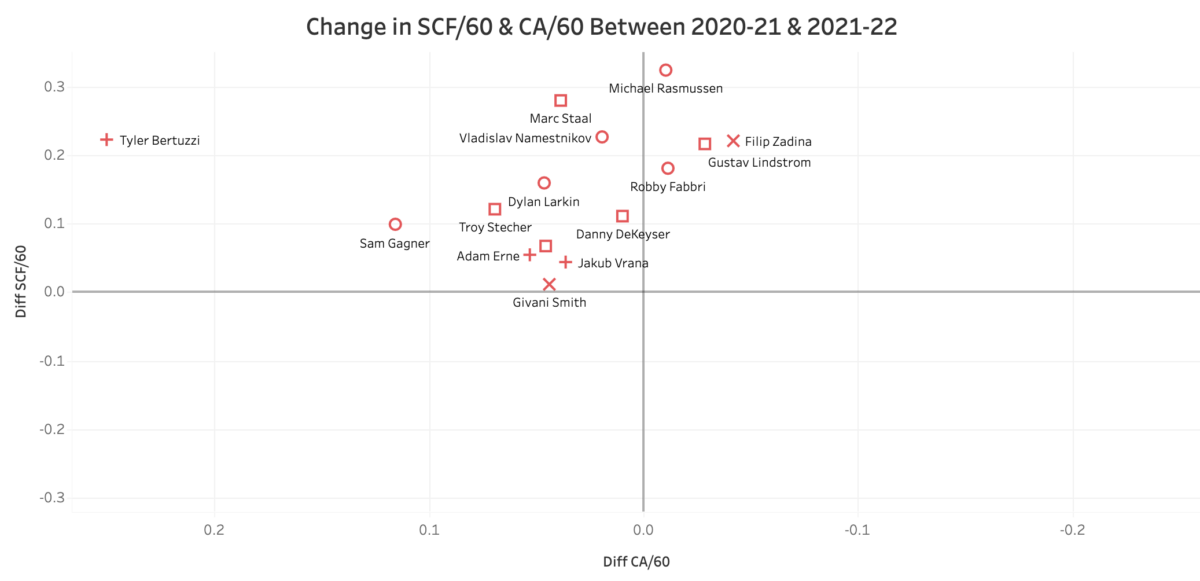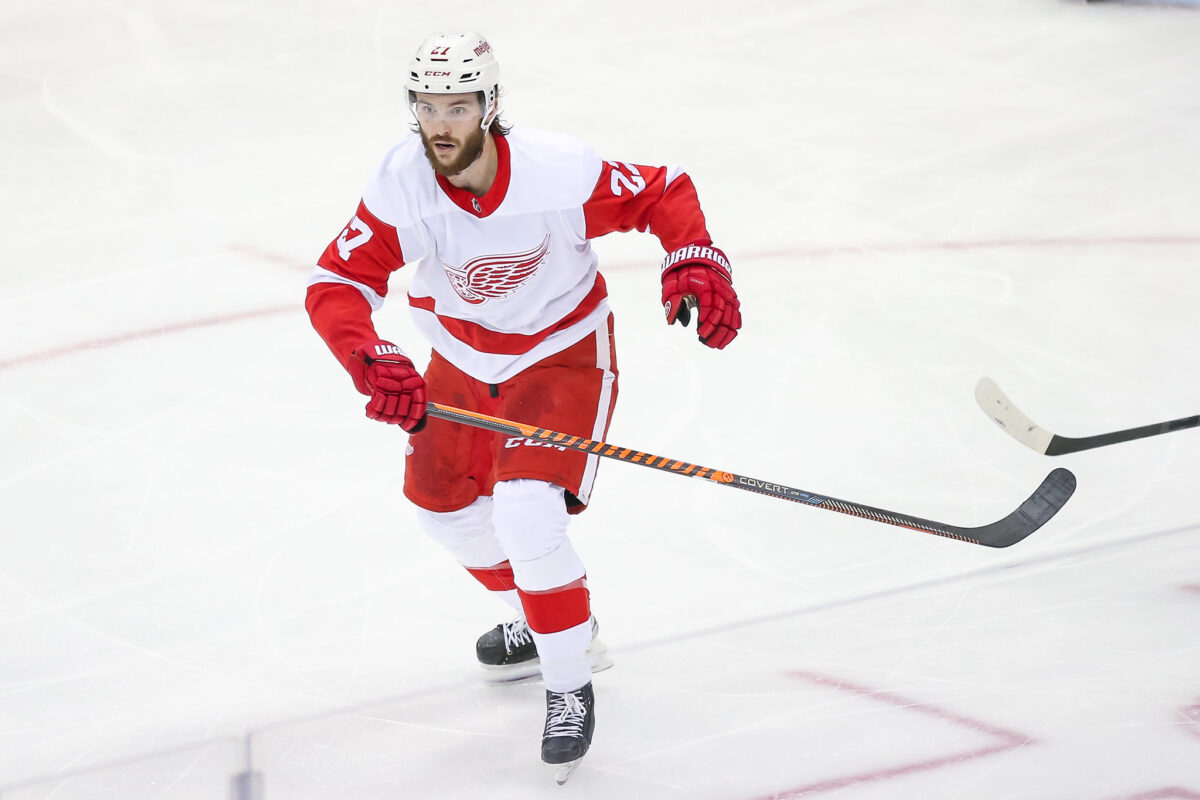We’ve already established that the Detroit Red Wings plateaued during the 2021-22 campaign after starting out strong. The lack of noteworthy improvement ultimately cost Jeff Blashill his job.
But what about individual players? Which Red Wings improved year-over-year? Let’s dive into the data to find out.
Methodology
Before getting to the good stuff, here’s a quick overview of my analysis. I selected Corsi-against per 60 (CA/60) and scoring chances-for per 60 (SCF/60)—both at five-on-five—as my primary metrics based on research previously conducted by DragLikePull. SCF/60 represents offensive contributions and CA/60 represents defensive contributions.
I compared the overall change in these metrics from year to year. For example, if a player’s 2020-21 SCF/60 was 20 and his 2021-22 SCF/60 was 25, then the overall change would be a 25 percent increase in SCF/60 ((25 – 20) / 20 = 0.25 = 25 percent increase).
Using these metrics, I evaluated Red Wings players who were on both the 2020-21 and 2021-22 teams. This excludes Moritz Seider and Lucas Raymond—they’re both great, don’t worry—plus those who skated with other NHL teams last year. Lastly, I threw out players who didn’t play much in one of the two seasons – sorry Joe Veleno.
That’s pretty much it, so let’s get to the data.
Which Red Wings Players Improved in 2021-22?
The chart below outlines percent increases/decreases in SCF/60 (y-axis) and CA/60 (x-axis) for several Red Wings players.

First and foremost, look at Tyler Bertuzzi way over to the left. His SCF/60 increased 22.24 percent year-over-year, and his CA/60 also increased 25.05 percent. You don’t want your CA/60 to increase – especially not that much.
What you do want to see is the notable improvements exemplified by Michael Rasumssen, Filip Zadina, and Gustav Lindstrom. The trio saw an increase in their SCF/60 and a decrease in their CA/60 – meaning they did not sacrifice defensive play to generate more offense.
Starting with Rasmussen, Detroit’s big center was probably their most improved player this season – offensively, defensively, and on the scoresheet. He likely slots in as a third-line center moving forward, and he’ll be outstanding in that role.

As for Zadina, the winger is easily the most polarizing player in Hockeytown. Not only did he improve his SCF/60 and CA/60 numbers, but he also received a D+ from THW colleague Devin Little in his recent article grading the 2021-22 Red Wings. And in Zadina’s case, both Devin’s grade and my assessment of his play are reasonable and accurate. How much more polarizing can you get?
It’s a similar, but maybe not as extreme situation for Lindstrom. Devin gave him a C- – about average for Detroit’s defense. But looking at his SCF/60 and CA/60 metrics, Lindstrom saw improvements in both. It’s fair to say Lindstrom took a step forward in his development, but could stand to be better next season.
Related: Grading Steve Yzerman’s Tenure as Red Wings GM
A few other Red Wings had noteworthy performances during the 2021-22 season. Robby Fabbri, Dylan Larkin, Marc Staal, and the recently traded Vladislav Namestnikov netted out positively when you consider their offensive and defensive contributions.
Assessment of the 2021-22 Red Wings
As we previously established, the Red Wings improved offensively, but took a major step back defensively. Still, a few players—Rasmussen, Zadina, Lindstrom, and Fabbri—were able to create more offense and reduce the amount of shots against. All four of these players figure into Detroit’s future to some degree, so their progress is nice to see.
But as a whole, the Red Wings need better structure on the defensive side of the game. A new coach will certainly help. Then, it’ll be up to the players to execute. And if they’re able to do so, we could see a lot more players in the top-right quadrant of next season’s SCF/60 vs. CA/60 chart.
Data courtesy of Natural Stat Trick.
